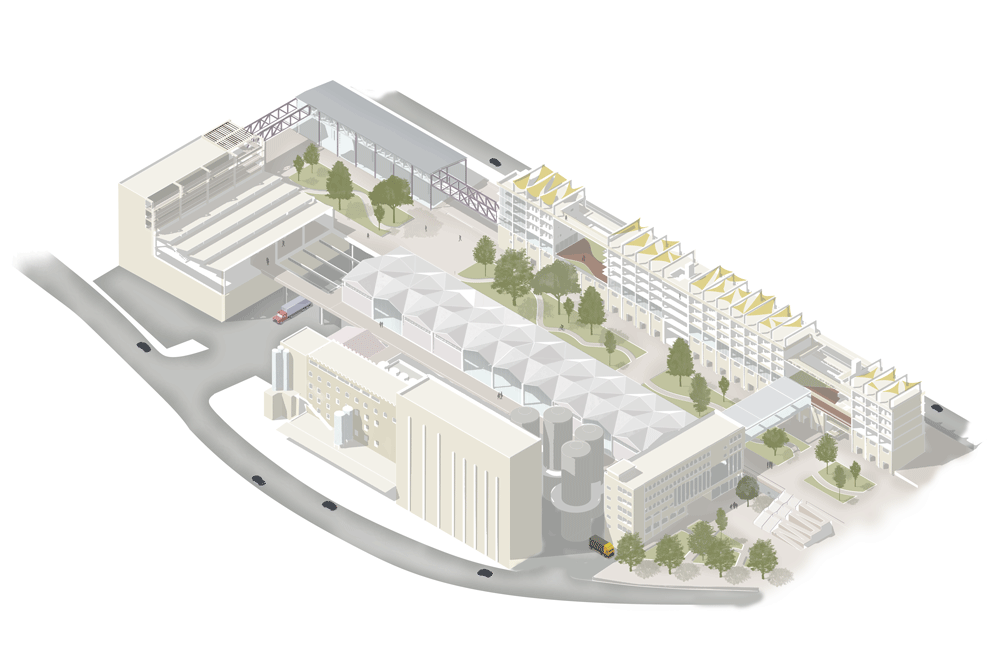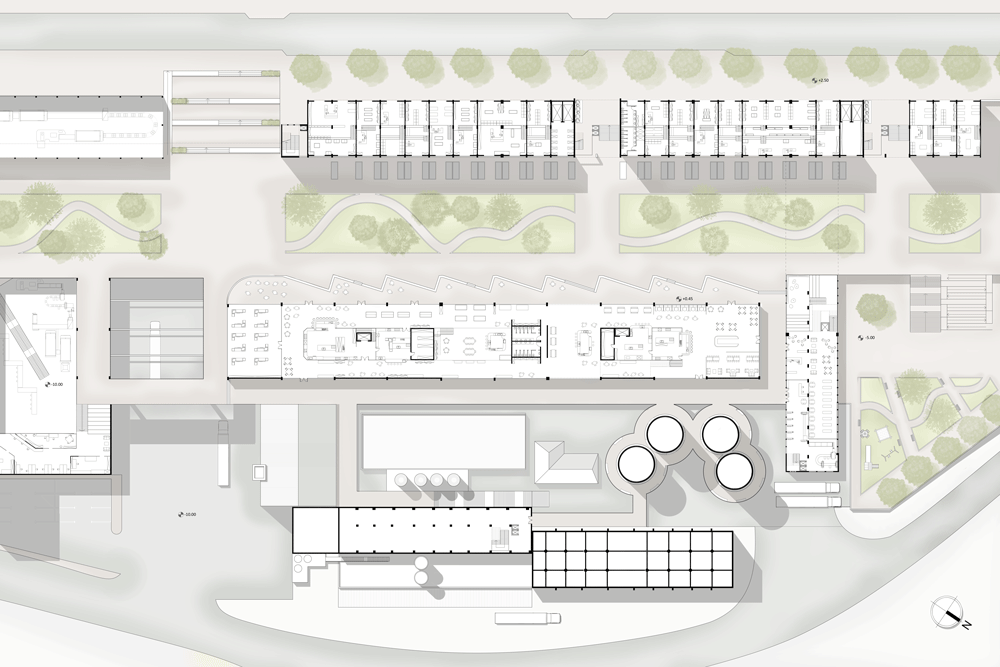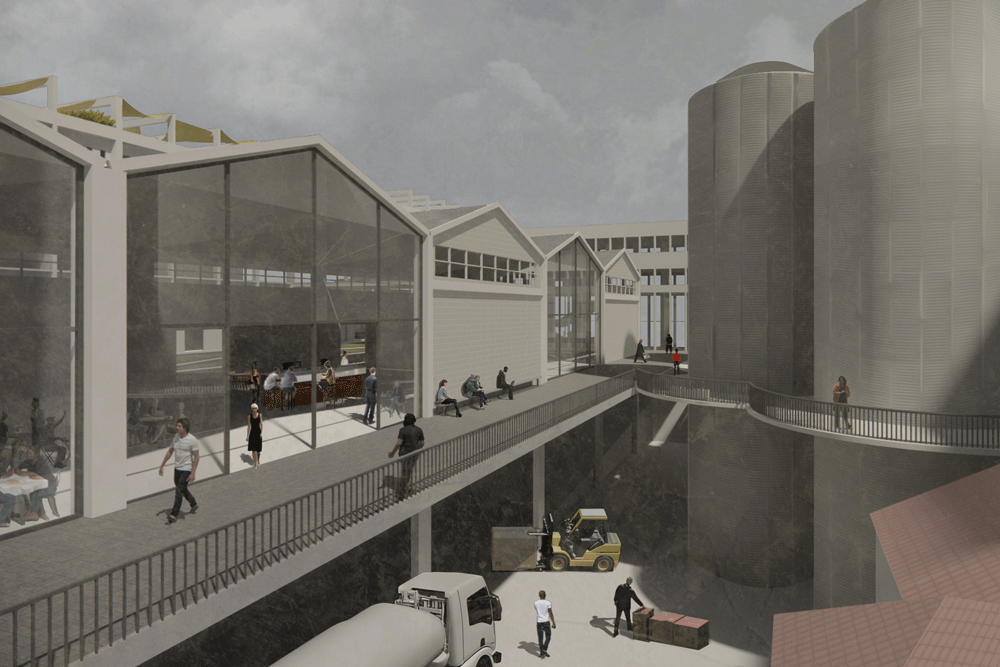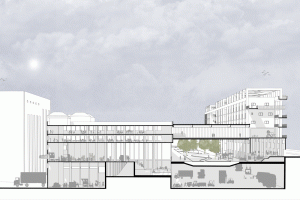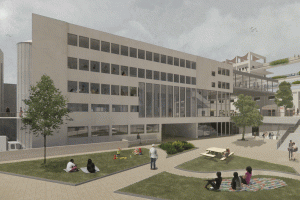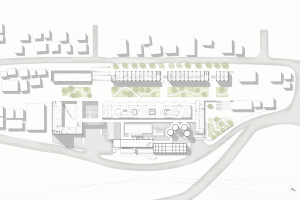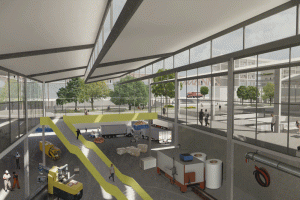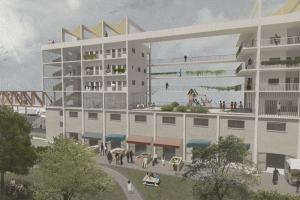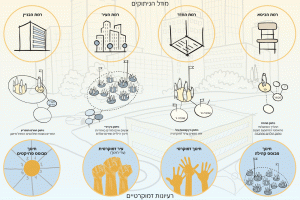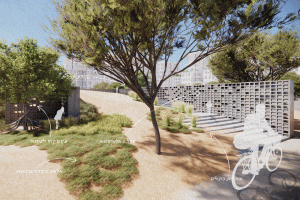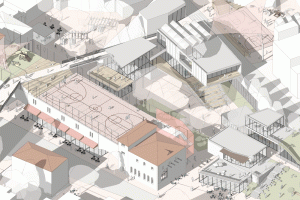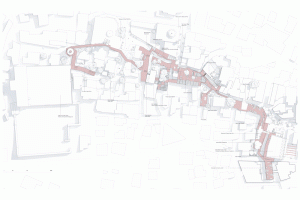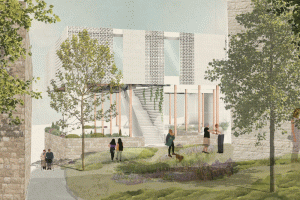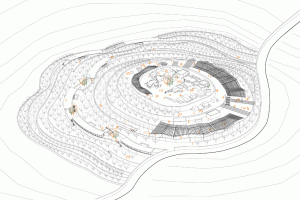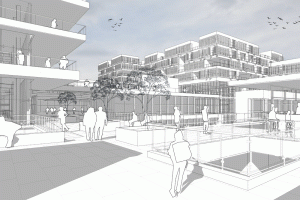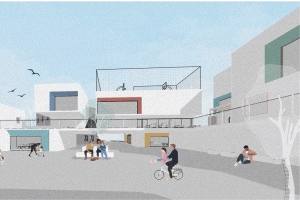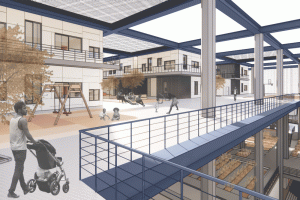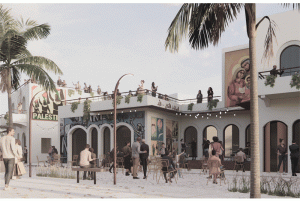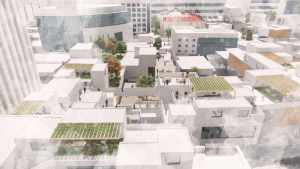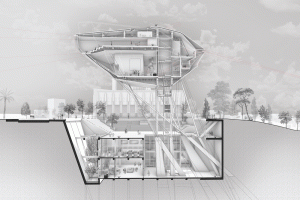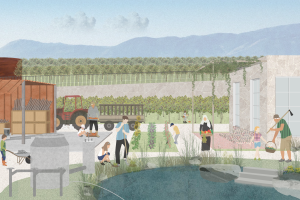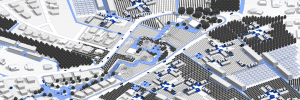The City Enterprise
Haifa’s rich industrial heritage played a significant role in shaping the city’s economic and cultural development throughout the twentieth century, and its influence is still felt today. However, the decline of industry as Israel’s primary economic sector, coupled with the global shift toward a service-based economy, has left many factories abandoned, creating desolate, lifeless spaces within the city.
One such area is the wholesale market complex and the ‘grand mills’ located at Haifa’s eastern entrances. Due to its proximity to the port and the Hijaz train station, this area once served as an intermediary zone between the heavy industries of Haifa’s port and the residential neighborhoods on Mount Carmel. The complex included industrial and craft buildings in close proximity to residential homes. Today, some buildings in the area are abandoned, while others remain operational. However, even the active facilities fail to realize their urban potential. Despite their proximity to residential neighborhoods and key urban areas, the complex is not conducive to walkability or urban engagement. Instead, it is marred by truck traffic, garbage, and neglected empty spaces.
This industrial zone serves as a case study for examining Haifa’s industrial past—its benefits and its shortcomings. The project offers insights into the current and future roles of industry in relation to the city. It seeks to develop an architectural solution that embraces sustainability, community involvement, and the circular economy. By using Haifa’s industrial heritage as a springboard for development and renewal while preserving and acknowledging its history, the project aims to reconnect these forgotten spaces to the city, restoring their relevance and integrating them into Haifa’s urban fabric.




